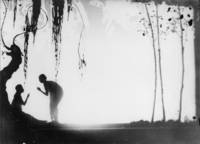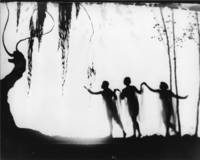Search results
Books on Cleveland Collection
Statement on Potentially Harmful Content: Digital Case provides access to historical and prima
Show moreKSL Digital Book Collection
Books on Cleveland Collection
Statement on Potentially Harmful Content: Digital Case provides access to historical and primary sources that may include language or content that is outdated, biased, offensive, or harmful. When such language or content is present in our repository, it is used solely to preserve the historical accuracy of the language, culture, and time period from which the content originated. If you are concerned about the language or content displayed in this record, please contact us at: digitalcase@case.edu
Show less
Show moreArmen Gloster Evans, Class of 1920. Dr. Evans enrolled in Adelbert College in 1913. He combined three years of college and four years of medical school. As a student, he joined others to fight and work hard to establish Alpha Phi Alpha (Pi Chapter) on the Western Reserve University campus. Dr. Evans served on the staffs of Rainbow Babies and Children's and St. Luke's hospitals. In 1960-61, he served as president of the old Western Reserve University Medical Alumni Association. He passed away in Cleveland on September 12, 1975.
Show less
Show more"The greatest of the English epics is Beowulf, written shortly after the year 700, probably by a monk in a Northumbrian monastery. The subject matter is an accumulation of centuries of pagan and Christian legends. These are given local and contemporary color by the description of many of the eight century social manners. This epic has great pictorial power, stately speeches, momentous action and the portrait of the idealized King. Beowulf, the mildest, kindest, and most beloved of men, makes this long poem one of the most important heritages from our Teutonic ancestors. The reflections of the author show a Christian point of view, while the descriptions of the ceremonies are pagan. The original text, mutilated and incomplete, written in a most archaic English, was a challenge to the translator, William Morris. "To Morris, the story,' so writes H. Holliday Sparling, 'or what remains of it, was intelligible and interesting, but not even he could render it in terms that are intelligible to any but a highly trained reader." (Ege, Otto F.) Beowulf was "done out" of the Old English by William Morris, assisted by A.J. Wyatt, in 1894. In 1895, it was issued as the thirty-second publication of the Kelmscott Press, founded in 1891 by Morris. The type is the "Troy", Morris' second type of design of which he wrote, "... herein the task I set myself was to redeem the Gothic character from the charge of unreadableness... I think I may claim (the "Troy") to be as readable as a roman". The Kelmscott volumes generally are regarded more as objects of art than readable books. Nevertheless, Morris' ideals did more to raise the standard of printing in many countries and to encourage individual expression than the work of any other printer who preceded him". (Ege, Otto F.)
Original Leaves from Famous Books
Otto F. Ege Collection
Show less
Show moreChronological index of the fifty manuscript leaves "These fifty manuscript leaves were selected to illustrate the art of the manuscript during the period of its greatest development and influence. They have been taken from books written in various European scriptoria by Benedictine, Franciscan, Carthusian, Dominican, and other orders of monks. Many are enriched with handsome borders, initial letters, and line-endings rendered in color, and twenty-five are illuminated with burnished gold or silver. The texts include the Bible, various church service books, the writings of the Church Fathers, and some of the classics. Changes in book hands from the revised carolingian to the angular and round gothic, the batarde, and humanistic style of writing are illustrated. Tools, materials, and their use and preparation are described, and some methods of dating and allocating the provenance of the book from which the leaf was taken are pointed out on the label attached to each of the leaves. The leaves were accumulated and selected and all of the accompanying information was prepared over a period of forty years by the late Otto F. Ege, Dean of the Cleveland Institute of Art and Lecturer on History of the Book at the School of Library Science, Western Reserve University."
Show less
Annals of Cleve
Show moreForeign language newspaper digest 1885-1939. A historical record of translated abstracts from foreign language newspapers of Cleveland.
Annals of Cleveland
Books on Cleveland Collection
Show less
Show moreDaniel D.Fowler, Class of 1914. Mr. Fowler graduated second in his class from the School of Applied Science. He received his degree in miners/metallurgical engineering. His thesis was "An Investigation of Iron Blast Furnace Slags." While at Case, Mr. Fowler was known as the "father" of the Pi chapter of Alpha Phi Alpha fraternity.
Show less
Show more"In the year 1748, Dodsley, the best known publisher of London, and six other bookseller paid Samuel Johnson a sum of ?1575 to compile a Dictionary of the English Language. This sum emboldened Johnson to move from his squalid quarters in the Strand to a pretentious house on Gough Square, in London, where he and five or six amanuenses labored for seven years, instead of three as first planned. Johnson's method was to read incessantly the best authors and to underscore the illustrative quotations he wished used and then to give them to his assistants to insert in their proper places. The general excellence of the definitions, the judicious selection of quotations, the etymologies, though often faulty, make the Dictionary useful and entertaining reading today. "Pension, an allowance made to anyone without an equivalence. In England it is generally understood to mean pay given to a state hireling for treason to his country". "Lexicographer" Johnson defined as "a grain which in England is generally given to horses, but in Scotland supports the people". Johnson in the preface reveals much of himself. "... In this work, when it shall be found that much is omitted, let it not be forgotten that much likewise is performed;...that the English Dictionary was written with little assistance of the learned, and without any patronage of the great, not in the soft obscurities of retirement, or under the shelter of academic bowers, but in midst of inconvenience and distraction, in sickness and in sorrow..." The work was printed by W. Strahan and seen through the press by Andrew Millar, one of the underwriting publishers. The underwriters received excellent returns on their original investment as edition after edition issued from the presses." (Ege, Otto F.)
Original Leaves from Famous Books
Otto F. Ege Collection
Show less
Show more"Montaigne, the foremost apostle of urbanity and detachment, wrote his Essays between the years 1571 and 1588. In the note "The Author to the Reader", the purpose is clearly stated. "...I desire therein to be delineated in mine owne genuine, simple, and ordinarie fashion...; for it is myselfe I pourtray... Thus, gentle Reader , myselfe am the groundworke of my booke: it is then no reason thou shouldest employ thy time about so frivolous and vaine a subject. Therefore Farewell." In these three books of Essays, Montaigne is always asking, "What do I know?" and then in discussions and personal essays he gives us meditations on his wide classical readings, observations of life around him, and revelations of his own whims and habits. Montaigne also shows that he believes in fraternity and the underlying goodness of humanity and he is therefore a leading representative of the French spirit in the Renaissance. The standard English translation is the one used in this edition, made by John Florio in the early part of the seventeenth century. This polyglot scholar, born in Italy, later a teacher of French and Italian at Oxford, made in this translation an English masterpiece and gave us Montaigne, the solitary philosopher, "the best companion in the world". In 1901, Bruce Rogers, "the ideal of all those who have tried to produce books", designed a special font "Montaigne" for this monumental edition of the Essays in attempt to meet a want for a large type face that would avoid the blackness of Morris' types and the thin effect of the ordinary types when used in the larger sizes". The Essays of Montaigne is one of the famous Riverside Limited Editions for which literary selections were determined by the rule that the text should 'allow of an individual style of typographical treatment." (Ege, Otto F.)
Original Leaves from Famous Books
Otto F. Ege Collection
Show less
KSL Digital Book Collection
Cleveland, Ohio and the Western Reserve Digital
Show more"A book largely about daily newspapers, said now to be our real government"
KSL Digital Book Collection
Cleveland, Ohio and the Western Reserve Digital Text Collection
Statement on Potentially Harmful Content: Digital Case provides access to historical and primary sources that may include language or content that is outdated, biased, offensive, or harmful. When such language or content is present in our repository, it is used solely to preserve the historical accuracy of the language, culture, and time period from which the content originated. If you are concerned about the language or content displayed in this record, please contact us at: digitalcase@case.edu
Show less
Show more";In terse, restrained language, Sir Sidney Lee, in his life of Shakespeare, gives us a fine example of criticism when he writes, 'In knowledge of human character, in wealth of humor, in depth of passion, in fertility of fancy, and in soundness of judgment he has no rival ?.. To Shakespeare the intellect of the world, speaking in diverse accents, applies with one accord his own words: 'How noble in reason! How infinite in faculty! In apprehension how like a god'. The First Folio, printed in 1623, contained not only all the works previously printed, but also seventeen others, 'all true to original copies,' which no doubt means the manuscript copies in the possession of the company of the players to which Shakespeare belonged. These were edited and seen through the presss by his fellow actors and friends, John Heminge and Henry Condell, 'without ambition either of selfeprofit or fame'. In an epistle, To the Great Variety of Readers, regarding Shakespeare manuscripts, these men say, 'his mind and hand went together; and what he thought, he uttered with that easiness, that we haue scarce receiued from him a bolt in his papers'. The Second Folio appeared in 1632, the Third Folio, many of which were lost in the great London fire, in 1664. The Fourth Folio, the last, was printed in 1685. In each reprinting, more typographical errors or 'corrections' crept in , due to careless proofreading, or ignorant actorsin their attempt to modernize the lines" (Ege, Otto F.) ";Herringman?s shop, 'The sign of Blue Anchor', was one of the chief lounging places for the literary lights of Restoration London. The paper used for the Folio was the best crown paper available, much better than that used for the printing of Bibles in those days" (Ege, Otto F.) "And art alive still, while thy Booke doth live" (Ben Jonson)
Original Leaves from Famous Books
Otto F. Ege Collection
Show less
Cleveland Play House Collection, Kelvin Smith Library
Show more"Gerard, a Barber-Surgeon, employed his energies chiefly upon horticulture and for twenty years had a renowned garden in Holborn, the fashionable suburb of London. Gerard's reputation rests on his work Generall Historie of Plants. Most of the 1800 woodcuts used were taken from earlier herbals, but the one illustrating the potato plant is perhaps the first figure of the plant ever issued. We cannot accept Gerard's as that of a scientist, for, as Arber states, his 'account of the "Goose tree"... "tree bearing Geese," removes what little respect one may have for him as a scientist, not indeed because he held and absurd belief, which was widely current at that time, but because he described it, with utter disregard of truth, as confirmed by his own observation'. Gerard states, "But what our eies have seen and hands have touched, we shall declare". He than relates "that trees actually bearing shells, which open and hatch out barnacle geese occur in the northern part of Scotland". Many copies of Gerard's Herbal were treasured in English homes for well over two hundred years- as a guide for folk medicine. The "virtues" of the plants made this the "Home Book of Medicine" for every possible ailment, as "Kings evil", "casting for the dead child", "shortness of breath", "dissolving clotted blood", "cooling the heat of the inward partes", and even "baldness". The printer of this work, John Norton, alderman, Printer to Queen Elizabeth in Latin and Greek, was also the first to establish a press at the college of Eton. Norton had previously commissioned a Dr. Priest to translate into English the great botanical work of Dodoens published in 1583, but Priest died before the work was finished. Gerard adopted Priest's work, re-arranged and completed it, and published it dishonestly as is own." (Ege, Otto F.)
Original Leaves from Famous Books
Otto F. Ege Collection
Show less
KSL Digital Book Collection
Books on Cleveland Collection
Show more"In sheer literary excellence, it is hardly conceivable that the bible of 1611 known as the King James Authorized Version will never be surpassed. The scholars and the linguists who worked for seven years on this version spared no pains to make it as perfect as they could. It was planned for the average man and woman. They did not disdain, as stated in the preface, "to bring back to the anvil that which we have hammered". The style is an evolution, "a revision of revisions" of the bible made during the sixteenth century in England. It rests largely on the simple and energetic diction of Tyndale's translation of the New Testament, first printed in Germany in the year 1525. The predominance of Saxon words is very remarkable. In the preface, drawn up by Dr. Miles Smith, later bishop of Gloucester, the authors disclaimed all originality and wrote, "We never thought from the beginning... to make of a bad one a good one... but to make a good one better or out of many good ones principal good one." Many great English authors give unstinted praise to this Bible. Macaulay says, "If everything else in our language should perish this book would alone suffice to show the whole extent of its beauty and power". Tennyson says "The Bible ought to be read, were it only for the sake of the grand English in which it is written, an education in itself". However, it was slow to win its ultimate position of unquestionable supremacy. King James deserves little credit for this work which bears his name. Barker, the printer, advanced considerable money to the editors during the period of writing. The nickname, The "He" Bible, was given to the first printing because of the wording in Ruth III:15, "and he went into the city". The second issue printed "she"." (Ege, Otto F.) With the Apocrypha
Original Leaves from Famous Books
Otto F. Ege Collection
Show less
Show moreCaption: "The Koran, the book of laws and religion of over 200 million Moslems, was dictacted by the prophet Mohammed after extensive travels to Syria and Palestine with a wealthy uncle. It was on these expeditions that Mohammed gained his concepts of monotheism and star worship. The 114 chapter of the Koran, arranged according to their length, have strange titles such as The Ant, The Spider, The Greeks and The Sun. The followers of Mohammed believed that the text contained revelations from the angel Gabriel, given to Mohammed in dreams after the year 600. The Koran gave all believers equality and eliminated the priestly class. It is held in great respect by Moslems, who, according to George Sale, the first translator of the Koran into English, do not dare to touch it without first being washed, nor to hold it below their girdles, nor knowingly suffer it to be in the possession of any person of a different persuasion. They swear by it and carry it into battle. This book was likely written in Cairo. With religious fervor rivaling that on the medieval monks, and with an alphabet surpassing the European one in artistic possibilities, the Moslem calligraphers of the Koran gained just honor and lasting renown. The art of writing is regarded by the Moslems as the finest of the arts, but few wrote before the time of Mohammed; in his own tribe, the Koreishites, only seventeen knew how to write. The prophet is not numbered among these. This leaf was written by the Egyptian calligrapher Mohammed ibn Kuzel Al Isawai with a reed, on egg-glazed paper that antedates any European-made paper by half a century." (Ege, Otto F.)
Original Leaves from Famous Books
Otto F. Ege Collection
Show less
Show more"Samuel Johnson was an Episcopal minister in Connecticut. He refused Benjamin Franklin's offer of first presidency of the Academy of Pennsylvania (now the University of Pennsylvania). Three years later, he accepted the same office at King's College (now Columbia University). Johnson, did, however, prepare two texts for the students of Franklin's academy, who ranged from fourteen to sixteen years of age. The first of these was Noetica. The title page states, "The First PRINCIPLES of Human Knowledge, Being a LOGICK including both METAPHYSICS and DIALETIC or the art of REASONING with a brief PATHOLOGY, and an Account of the gradual progress of the HUMAN MIND, from the first Dawnings of Sense to the Highest Perfection". The full title for Ethica, the second work is, "The First PRINCIPLE of Moral Philosophy and especially that part which is called ETHICS in a CHAIN of necessary CONSEQUENCES from certain FACTS" Benjamin Franklin, because of his wide interest, important inventions, searching intellect and epoch-making contribution to democratic government, is considered one of the most distinguished of men, as well as the outstanding printer in his own period. During his long and busy life, here and abroad, his interest in printing never lessened. When he wrote his will in his closing days of his life, it began: "I, Benjamin Franklin, of Philadelphia, Printer, Late Minister Plenipotentiary from the United States to the court of France..." (Ege, Otto F.) "The first college textbooks to be written and printed in North America"
Original Leaves from Famous Books
Otto F. Ege Collection
Show less
Cleveland Play House Collection, Kelvin Smith Library
Cleveland Play House Collection, Kelvin Smith Library


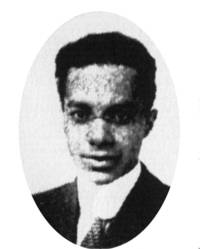
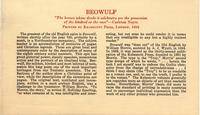



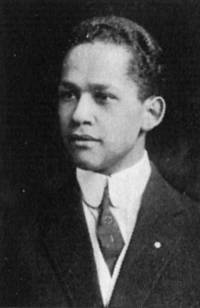
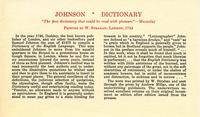

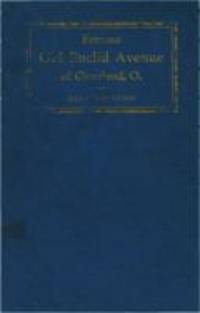

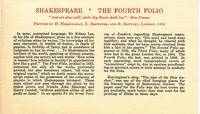

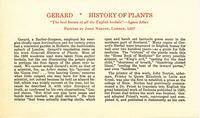

![King James [Bible] Authorized Version](https://digital.case.edu/sites/default/files/styles/islandora_imagecache_image_style_medium/public/externals/4b1530069440349ad698bdaef2b99de6.jpg?itok=R4cxtblZ&pid=ksl:egeboo29&iic=true)


